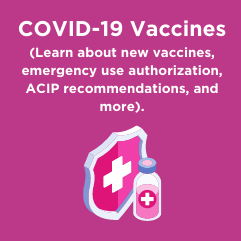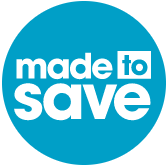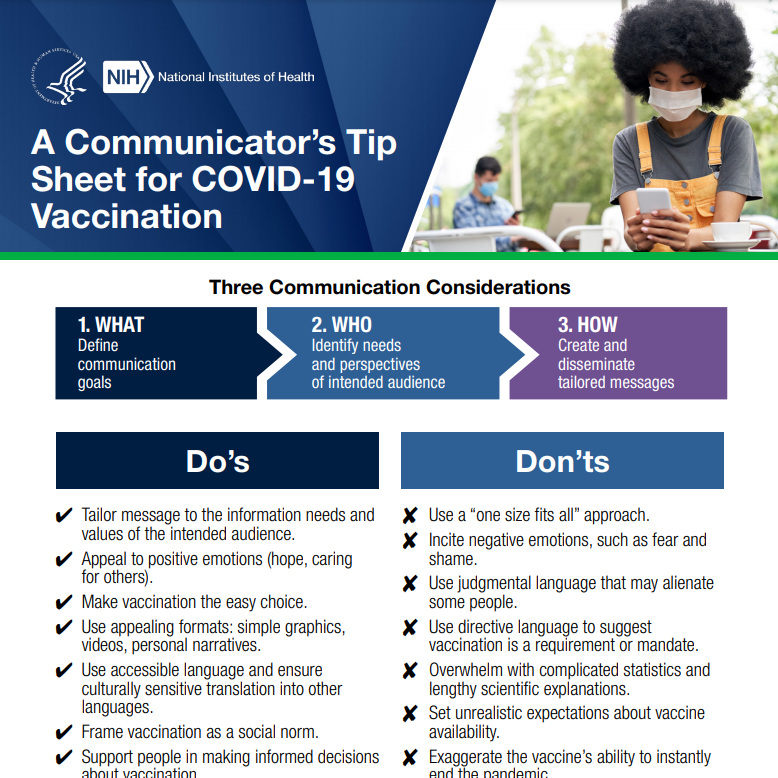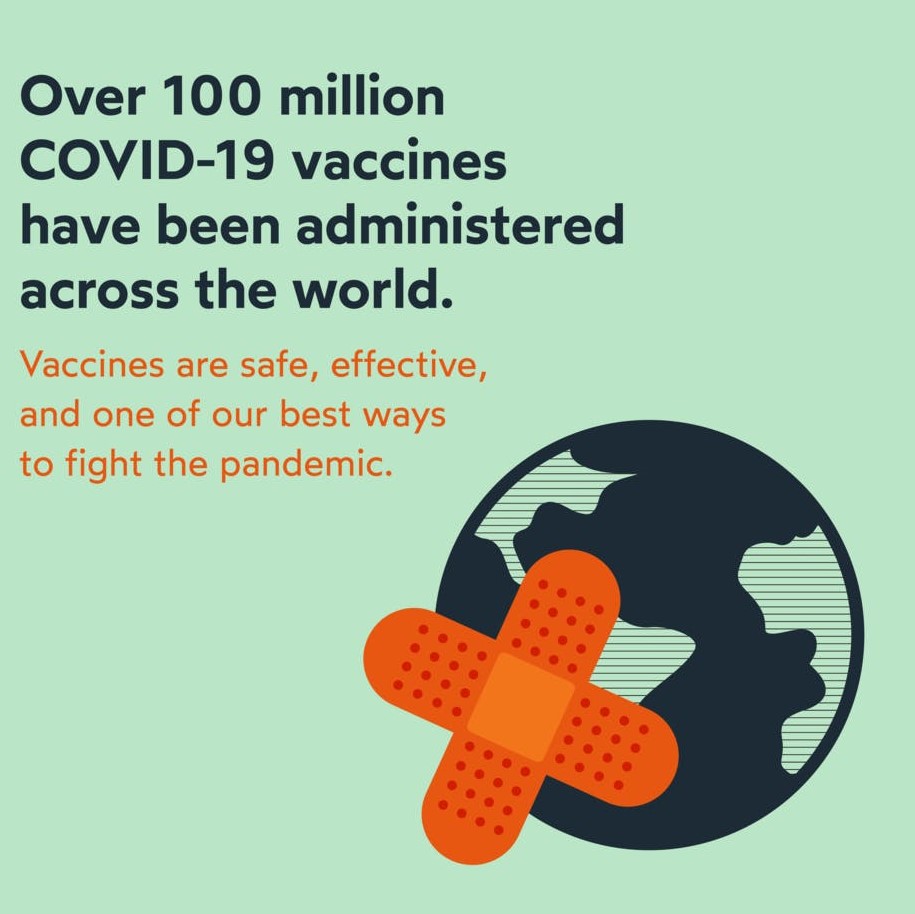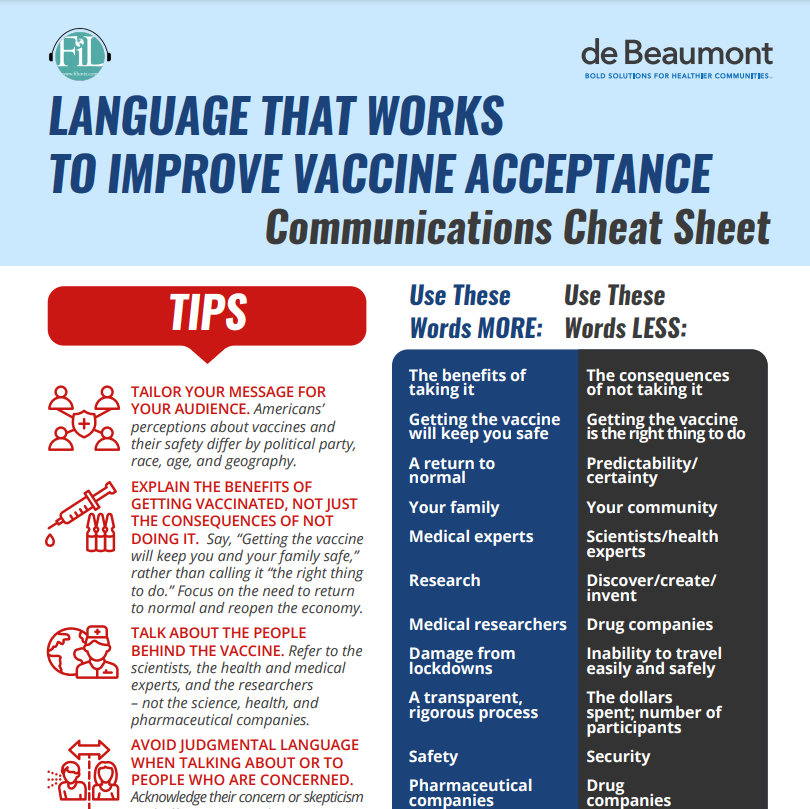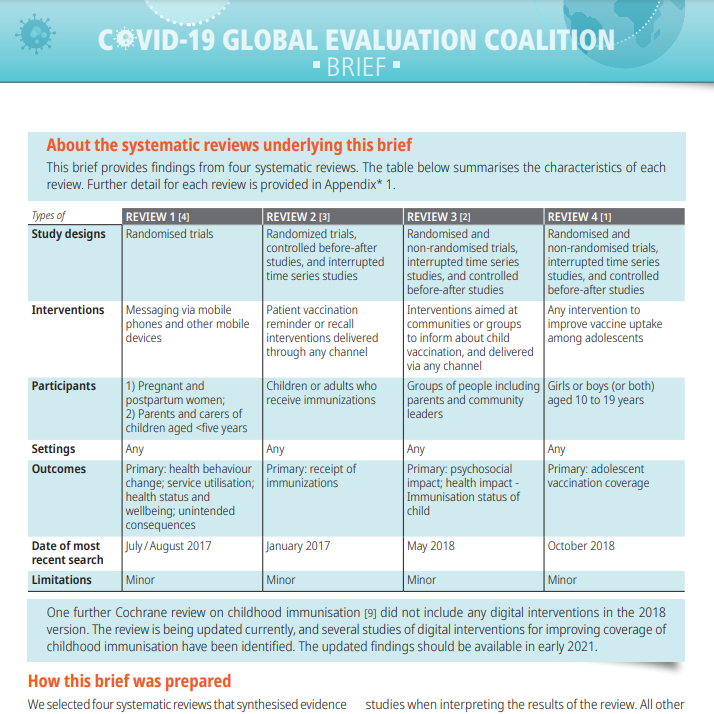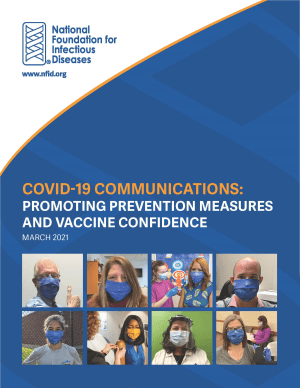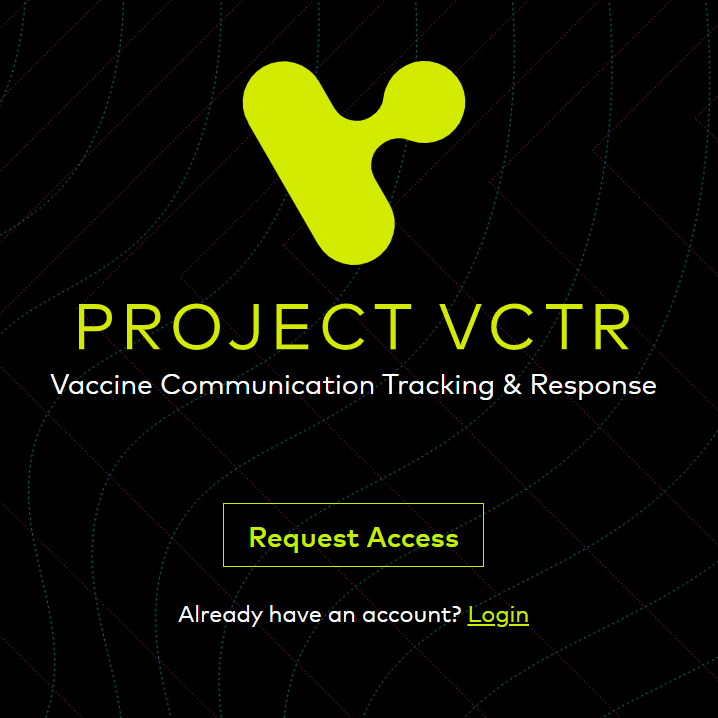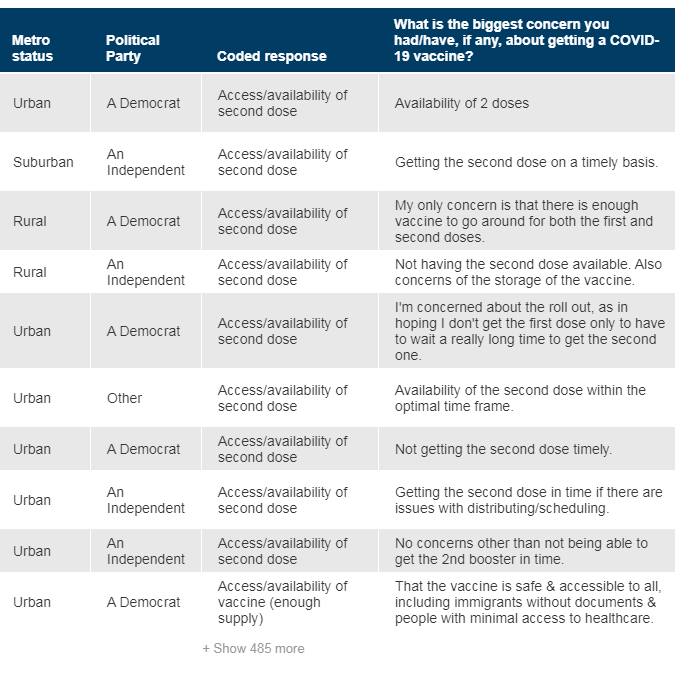
COVID-19 Vaccine Communications Resources
Communication is a critical component of successful distribution, administration, and uptake of COVID-19 vaccines. Governors recognize the importance of effective communication in clarifying policies and processes, engaging key partners and the public, building vaccine confidence, and addressing misinformation.
Last Updated: May 11, 2021
States and territories outlined communications objectives in initial planning for COVID-19 vaccines and have begun to execute a variety of strategies to provide timely and robust information to providers, the public, and other key audiences. In addition, the federal government and other national organizations have developed guidance and resources that may support and complement state efforts.
This resource page provides brief descriptions and quick links to an array of state and national COVID-19 vaccine communications materials, which states and key partners may draw upon to inform ongoing efforts. The resource page will be updated periodically to capture the release of new and updated materials. The National Governors Association welcomes feedback on additional state and national communication resources that may be added to this page. If you have questions or additional resources to share, please contact Brittney Roy (broy@nga.org) and Michelle LeBlanc (mleblanc@nga.org.)
State Communications Toolkits
The following are examples of state communication toolkits that include a variety of materials, including sample messaging and talking points, fact sheets, social media posts, infographics, videos, posters and flyers, FAQs, and targeted resources for providers and other community partners.
State and Territorial Resources
COVID-19 Vaccine Data Dashboards
States and territories have established public-facing dashboards to provide the public up to date information on COVID-19 cases, deaths and other aspects of pandemic impact and response. Some states have added COVID-19 vaccine administration data to existing dashboards and others have established dedicated dashboards or webpages to provide information on vaccine rollout. Information reported by states varies but may include details such as the number of doses the state has received and administered, vaccine administration by provider site, or vaccination according to demographics such as age, sex, race/ethnicity, or region. Below is a clickable map with links to individual state dashboards:
Select a state to view their dashboard:
Text list
Frequently Asked Questions
The following are links to state and territorial resources addressing frequently asked questions related to COVID-19 vaccines. Common topics addressed include state processes for vaccine rollout, such as when, where and how individuals can get vaccinated, and details on vaccine development, safety, and effectiveness.
Text List
Centers For Disease Control And Prevention (CDC)
The CDC provides a series of audience specific communications toolkits and other resources for COVID-19 vaccines. The resources include a variety of materials and information, including fact sheets, FAQs, and social media messages, that may be used or adapted to educate and build confidence in COVID-19 vaccines. Specific resources include:
- Building Confidence in COVID-19 Vaccines
- COVID-19 Vaccination Communication Toolkit For Medical Centers, Pharmacies, and Clinicians
- COVID-19 Vaccine Communication Toolkit for Community-Based Organizations
- COVID-19 Vaccine Communication Toolkit for Essential Workers
- Long-Term Care Facility Toolkit
- Recipient Education
- Social Media Toolkit: COVID-19 Vaccinations
- Frequently Asked Questions about COVID-19 Vaccination
- 8 Things to Know about the U.S. COVID-19 Vaccination Program
- Rapid Community Assessment Guide
National Resources

COVID-19 Vaccine Education Initiative | Ad Council and COVID Collaborative
Offers resources designed to reach a variety of audiences and shift vaccine concern to vaccine confidence through multi-media assets. The It’s Up to You campaign encourages individuals to get the latest vaccine information and a video series features health professionals advocating for the efficacy and safety of available COVID-19 vaccines.
Information and Resources on COVID-19 and COVID-19 Vaccines | Vaccinate Your Family
Includes resources on the basics of COVID-19, questions and answers about COVID-19 vaccines, social media graphics and educational handouts, among other resources.
Made to Save | Civic Nation
A national grassroots effort to ensure communities hardest hit by the pandemic have access to the COVID-19 vaccines and accurate, timely information by offering resources and trainings for individuals to encourage friends and family members to get vaccinated.
COVID-19 Vaccine Communications Guidance, Resources and Tools | Resolve to Save Lives, an initiative of Vital Strategies
Provides a compilation of communications tools, guides on misinformation, training resources for health care workers and more.
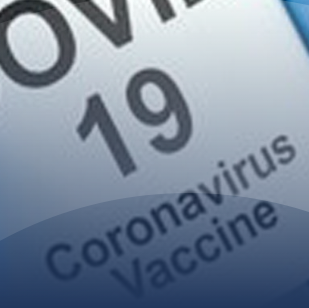
Vaccine Communication/Educating Patients & the Public | Infectious Disease Society of America
Includes a collection of tools, multimedia, and additional resources to inform clinician communication about COVID-19 vaccination with patients, special populations, and the general public.
Communications Resources for Public Health Professionals | Public Health Communications Collaborative
Provides resources to support public health professionals in addressing vaccine hesitancy and misinformation, including videos, social media posts, infographics, cheat sheets, and presentations.
Language that Works to Improve Vaccine Acceptance | de Beaumont Foundation
Provides a communication cheat sheet with quick tips, dos and don’ts, and examples of effective language. The resources were developed based on a nationwide poll in conducted by de Beaumont and pollster Frank Luntz, in partnership with the American Public Health Association, the National Collaborative for Health Equity, and Resolve to Save Lives, an Initiative of Vital Strategies.
Effects of Digital Interventions for Promoting Vaccination Uptake | The Covid-19 Global Evaluation Coalition
Offers findings on effective digital interventions to promote vaccine uptake, including targeted messages, prompts, reminders and recalls via web and mobile platforms.
COVID-19 Communications: Promoting Prevention Measures and Vaccine Confidence | The National Foundation for Infectious Diseases (NFID)
Provides a framework for developing effective communications developed from a multidisciplinary expert roundtable in January 2021. The toolkit includes resources to help leaders across sectors communicate effectively and encourage the public to follow evidence-based public health prevention measures to control the spread of COVID-19.
Understanding Public Perception
The following resources provide data on public perception, attitudes, and misinformation related to COVID-19 vaccines.
Project VCTR | The Public Good Projects
Project VCTR (Vaccine Communication Tracking and Response) monitors traditional and digital media to determine real-time knowledge, attitudes, and behaviors of the public related to vaccines. The platform provides national and state-specific data and insights for public health practitioners, researchers, communicators, and members of the press.
COVID-19 Vaccine Monitor | Kaiser Family Foundation
Provides findings from surveys and focus groups on the public’s attitudes and experiences with COVID-19 vaccinations.
Public sentiments and emotions around COVID-19. What is the world feeling and how is it different across time and place? | Vaccine Confidence Project
Provides survey and polling data, research, and reports on public perceptions of COVID-19 vaccines, and strategies for raising awareness and building vaccine confidence.
<- Return to COVID-19 : What You Need to Know
Webpage Notification and Waiver of Liability
This page includes memoranda, resources, trackers, and other materials developed by the National Governors Association (NGA) to assist governors and state governments with COVID-19 response efforts. These materials are intended to provide information that is currently in the public domain and is not intended to be used as a source for legal or professional advice. NGA and its governing bodies, officers, and employees assume no responsibility for information contained on this webpage and disclaim all civil or criminal liability in respect of such information. NGA makes no endorsements or recommendations of information provided, and visitors to this website should always seek the advice of an appropriately qualified professional pertaining to specific material references. Information contained in such materials is not exhaustive and may be changed or updated at any time. Specific disclaimers may apply in addition to certain content or parts of this webpage.

